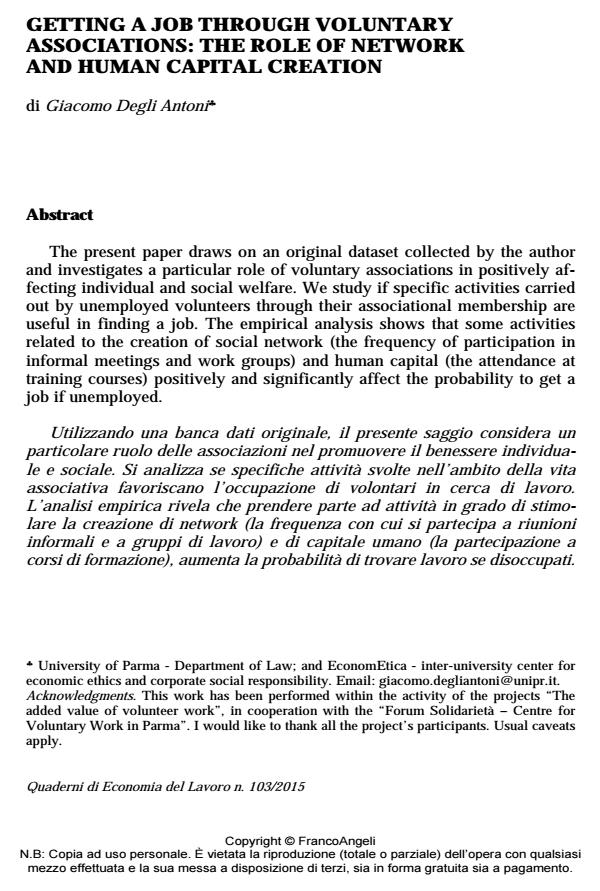Getting a job through voluntary associations: the role of network and human capital creation
Journal title QUADERNI DI ECONOMIA DEL LAVORO
Author/s Giacomo Degli Antoni
Publishing Year 2015 Issue 2015/103
Language Italian Pages 18 P. 49-66 File size 111 KB
DOI 10.3280/QUA2015-103004
DOI is like a bar code for intellectual property: to have more infomation
click here
Below, you can see the article first page
If you want to buy this article in PDF format, you can do it, following the instructions to buy download credits

FrancoAngeli is member of Publishers International Linking Association, Inc (PILA), a not-for-profit association which run the CrossRef service enabling links to and from online scholarly content.
Utilizzando una banca dati originale, il presente saggio considera un particolare ruolo delle associazioni nel promuovere il benessere individuale e sociale. Si analizza se specifiche attività svolte nell’ambito della vita associativa favoriscano l’occupazione di volontari in cerca di lavoro. L’analisi empirica rivela che prendere parte ad attività in grado di stimolare la creazione di network (la frequenza con cui si partecipa a riunioni informali e a gruppi di lavoro) e di capitale umano (la partecipazione a corsi di formazione), aumenta la probabilità di trovare lavoro se disoccupati.
Giacomo Degli Antoni, Getting a job through voluntary associations: the role of network and human capital creation in "QUADERNI DI ECONOMIA DEL LAVORO" 103/2015, pp 49-66, DOI: 10.3280/QUA2015-103004